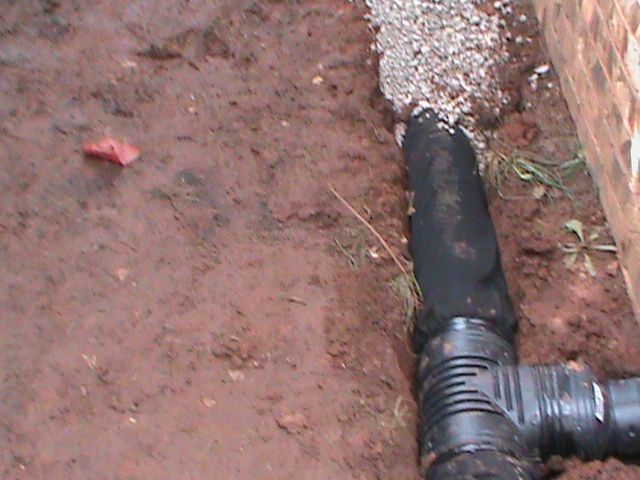French Drains, Surface Drains, and Channel Drains are the three main ingredients of residential and business Drainage Systems. Simply put, French Drains are used in large areas, Surface Drains are used in smaller areas and Channel Drains are used in and across Cement.
Some Simple rules about French Drains and Surface Drains. A French Drain should be installed when there is a large volume of water to be drained over a large area. Surface Drains are needed when the water volume is smaller and the Drainage Area is small and focused. French Drains move away Surface Water and Sub-Surface water (water that flows under ground). Surface Drains move only surface water.
Many people don't know what type of Drain to use in a particular situation.
French Drain Design must take into account many variables. One consideration for a French Drain that many times is missed, is the type of soil. French Drain Design must take into account the type of soil that the French Drain runs through. If the soil is "Tight or made up of Clay, A French Drain Liner may not be necessary. The Gravel or Limestone that is used to fill the French Drain trench may be all that is needed to maintain the integrity of the trench over time. This means that dirt will not mix in with the French Drain Gravel and clog it up over time. This is not the case however if your soil is sandy or loose. A Trench Liner should be used to prevent this type of soil from moving into the gravel of the French Drain. Trench Liners are relatively inexpensive and are not hard to install. If you are not sure what to do then install the Trench Liner in the French Drain.

- Installation of a French Drain in Edmond Oklahoma
Drainage Systems can be made up of one drain or a combination of many drains. Drainage problems can be very complex. Complex Drainage Problems may require a combination of several different types of drains all inter-connected and working together. Other times the drainage problem may be simple and straight-forward requiring only one drain or several of the same type of drain connected together.

- Curb Outlet as an Exit Point for a French Drain in Edmond
An example of a complex drainage system would be: A French Drain in the back yard connected to a Surface Drain near a flower bed connected to several gutter downspouts, which are connected to a Channel Drain going across a driveway, which is connected to additional Surface Drain in the front yard, which runs to a Curb Fitting that lets all the water drain out on to the street.

- Popup Emitter to release water from a French Drain in Yukon
A simple Drainage System might consist of a Surface Drain that is connected to a second Surface Drain which runs to a Pop-up Emitter which lets water drain over the curb and into the street.
CMG Installs all types of Drainage Systems in Oklahoma.
Today we installed a 6 Inch French Drain at an apartment complex near Lake Heffner. The French Drain started in the back yard of one unit. The Drain Pipe went under the fence and into the adjoining unit's back yard. The French Drain then looped around their patio and out under their fence to the west. To get the 6 inch Drain Pipe to the correct Exit Point, we had to cut out 30 feet of sidewalk and run the French Drain Pipe under the sidewalk. Next, we replaced the sidewalk with new concrete. Finally, we dug a drainage ditch across the front yard to the parking lot. We covered the Drain Pipe with sod that we carefully removed when digging the trench. At the edge of the parking lot a 6 inch Pop-Up Emitter was installed to release the Storm water. Seven Gutters were connected directly into the Drainage System along the way.

- Installing Gravel on top of a 6 inch French Drain
This particular Drainage System was made up of 55 Feet of 6 inch French Drain, 78 Feet of Solid ADS Solid Drain Pipe, Seven Gutter Connections, and one 6 inch Pop-Up Emitter.


No comments:
Post a Comment